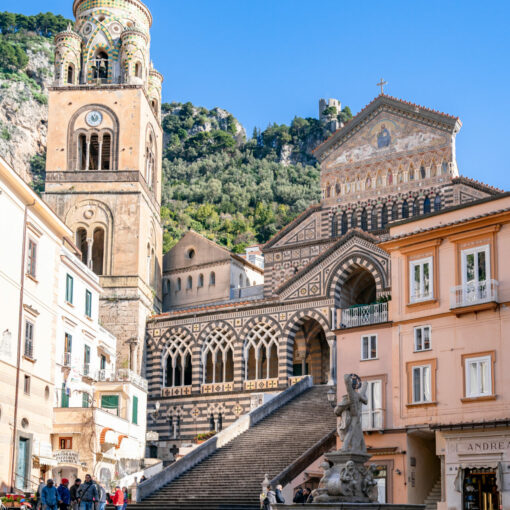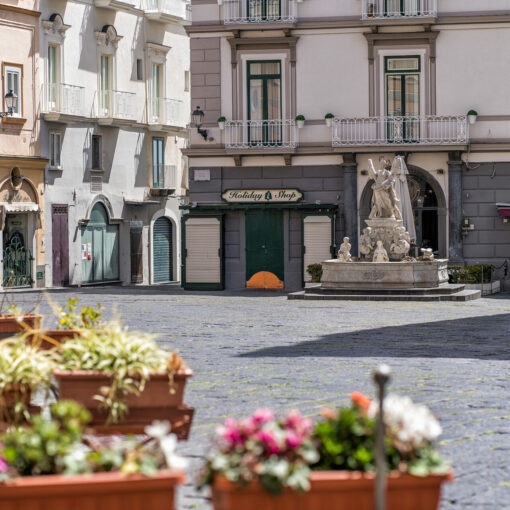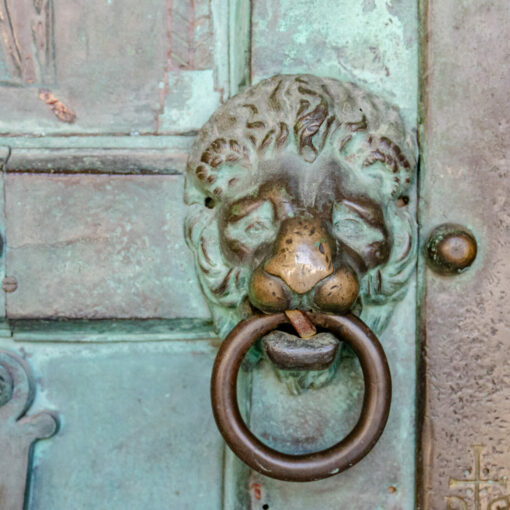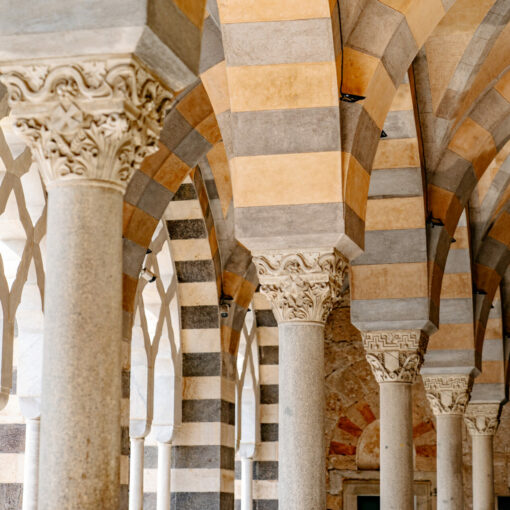In the Middle Ages, Piazza Duomo was one of the most important places in the city centre and was called Platea Nova. The square was built in the last quarter of the 13th century, after the Canneto River was covered over. In addition to numerous small workshops, the Platea Nova was overlooked by the ancient cathedral and, during the Norman period, by Palazzo Pubblico with the adjoining chapel of S. Pietro a Curte, later replaced by the Archiepiscopal Seminary, distinguished by the sundial clock on its façade, founded in 1635 by Archbishop Pichi.
On the southern side of the square, we find the fountain (1760) known as the Fontana di S. Andrea Apostolo or del Popolo, restored in 2018 and formerly located at the foot of the Cathedral’s imposing staircase “scalea“.
Multi-storey buildings from different eras surround the square. Behind the fountain, stands a palace bordered to the east by Via Mansone I and to the west by Porta della Marina. It was built in the late Middle Ages to house the seat of the nobles. The same palace housed the court of the ‘protontino’, the head of the Amalfi navy, who kept the original copy of the Tabula de Amalpha here. With the end of the infeudation of the Duchy (1583), the building was turned into the seat of the Spanish viceroy governor.
Opposite the cathedral, there is a yellow ochre building with neoclassical decorative elements, built towards the end of the 18th century.
On the eastern side of the square, the long staircase leads to the atrium of the Cathedral dedicated to S. Andrea Apostolo. The current Romanesque façade, on which Neapolitan architects Enrico Alvino and Guglielmo Raimondi worked, was completed in 1891 to replace the Baroque front that collapsed in 1861.
Mosaic scenes, based on Domenico Morelli’s sketches, were applied to the new surface. The tympanum features a scene from the Apocalypse of St. John, with Christ as the Byzantine emperor enthroned between the symbols of the four Evangelists, and flanked by the rulers of the earth paying homage to him. The band below, enclosed in ogival niches, depicts the twelve apostles.
In the early afternoon, sunlight reflects off the mosaics, creating special light and colour effects. The sketches of the mosaics painted by Morelli can be seen in hall named after him at the Town Hall, Sala Morelli. The façade underwent a lengthy restoration that was completed in 2020.
The bell tower, built between 1180 and 1276, stands next to the Cathedral. The base is made up of massive square stone blocks, while the first and second floors up to the cornices feature Romanesque-style mullioned windows with classical columns and capitals. The bell tower, distinguished by interlaced arches marked by a series of yellow and green majolica tiles, shows a clear Moorish influence.




